The rich history of the Roman civilization means that not only did they dominate the ancient world, but they also continue to leave a footprint on our world today. From architecture, law, culture and religion to philosophy and engineering, the Romans left a lot behind. We can still see remnants of their masterful engineering feats today. Below is a list of prominent Roman ruins.
The Colosseum
Well, it is kind of stating the obvious here. The eternal city is awash with Roman ruins. Archaeologists are still finding things daily as they continue to uncover the ancient city.
The most prominent of those ancient ruins is of course the Colosseum (Latin: Amphitheatrum Flavium). There are countless photos and pictures of the Colosseum taken throughout history, each highlighting the magnificence of the engineering. It looks stunning, even in its ruinous state.
The construction of the Colosseum started under the reign of Emperor Vespasian in AD 72. It was completed in AD 80 under the Emperor Titus. Built atop the old palatial grounds of Emperor Nero’s Domus Aurea, the Colosseum was one of the most popular sporting arenas in the ancient city.
The Colosseum could hold anywhere between 50,000-80,000 people (the capacity varied throughout its life). It was the home of gladiatorial contests, beast hunts, executions of criminals, re-enactments and, according to some sources, mock naval battles.
It was used regularly throughout the ensuing centuries but fell out of favor at the turn of the fifth century after Emperor Honorius banned gladiatorial fights in AD 399 and AD 404. The last recorded gladiatorial contest was in AD 435.
The Colosseum continued to be used, however its usage continued to decline. The last animal hunt was recorded in AD 523, while athletic contests continued well into the sixth century. It had various uses through the medieval period and in modern times it remains one of the world’s top tourist attractions.


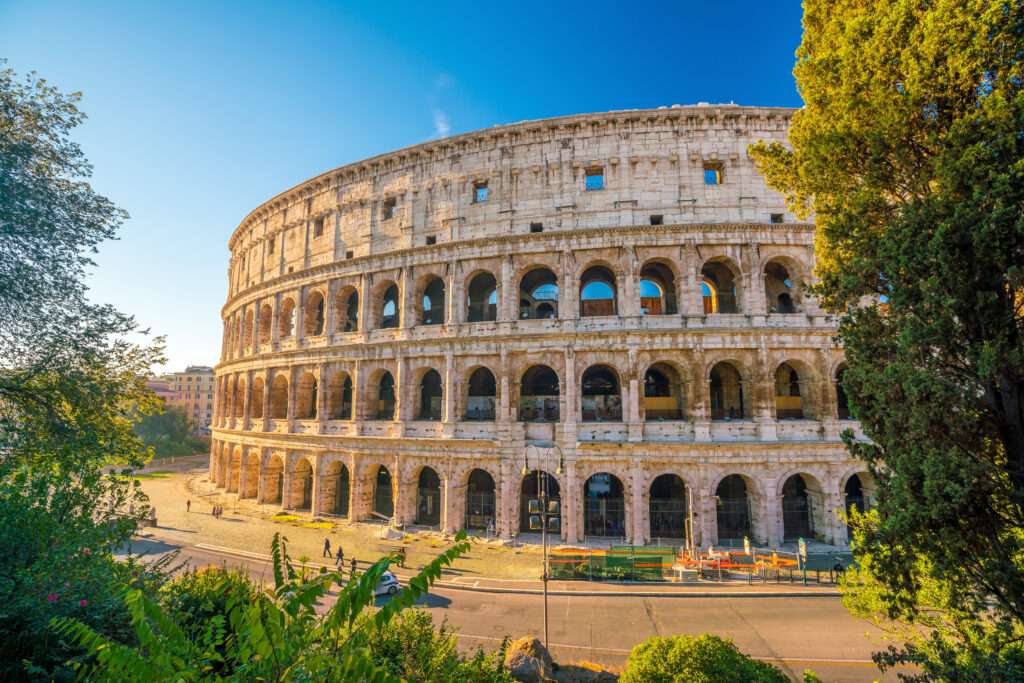
There are countless other buildings that lay in ruin in Rome itself. This includes the Temple of Saturn, Stadium of Domitian, Circus Maximus, Baths of Diocletian, the Temple of Jupiter Optimus Maximus and Trajan’s Market, just to name a few.
Circus Maximus
The Circus Maximus was the main sporting arena of Rome. The arena, measuring 621m (2,037ft) in length and 118m (387ft) in width, historians estimate that it could have accommodated 150,000-250,000 rabid spectators. The area of where the Hippodrome stood was first designated as a place to hold public events by Etruscan king, Lucius Tarquinius Priscus in the early sixth century BC, during the Regal era of the Roman civilization.
The Circus Maximus was used for a myriad of reasons over its lifetime, including chariot races, gladiatorial spectacles, festivals, religious events and of course, chariot racing. With the construction of the Colosseum and the Stadium of Domitian in the first century AD, the Emperors were able to divert a lot of events to these arenas, leaving the Circus Maximus with more time to hold the wildly popular chariot races.
With the Colosseum falling into disrepair at times (due to earthquakes), the Circus Maximus held other events in the later Imperial period. The last beast hunt was recorded in AD 523, while the last recorded chariot race was held by Ostrogothic king, Totila, in AD 549.
It went through many different uses throughout medieval times but was prone to flooding, with most of its structures being destroyed, while others have been covered in layers of earth. Little is left in the way of ancient ruins, so it is now an open park area that is used for festivals and other outdoor events.
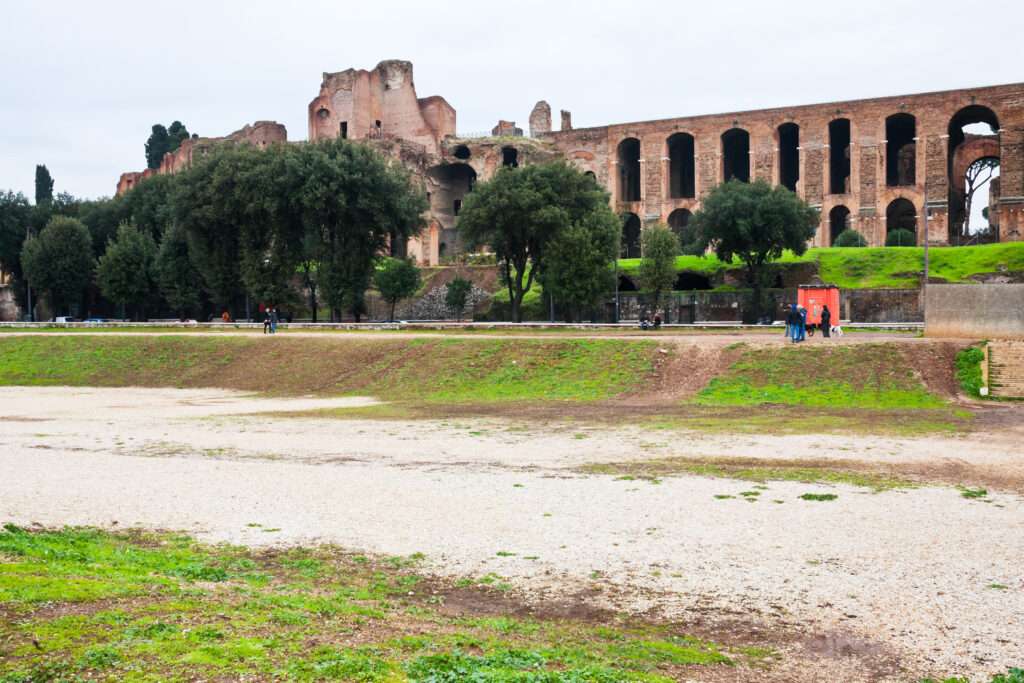
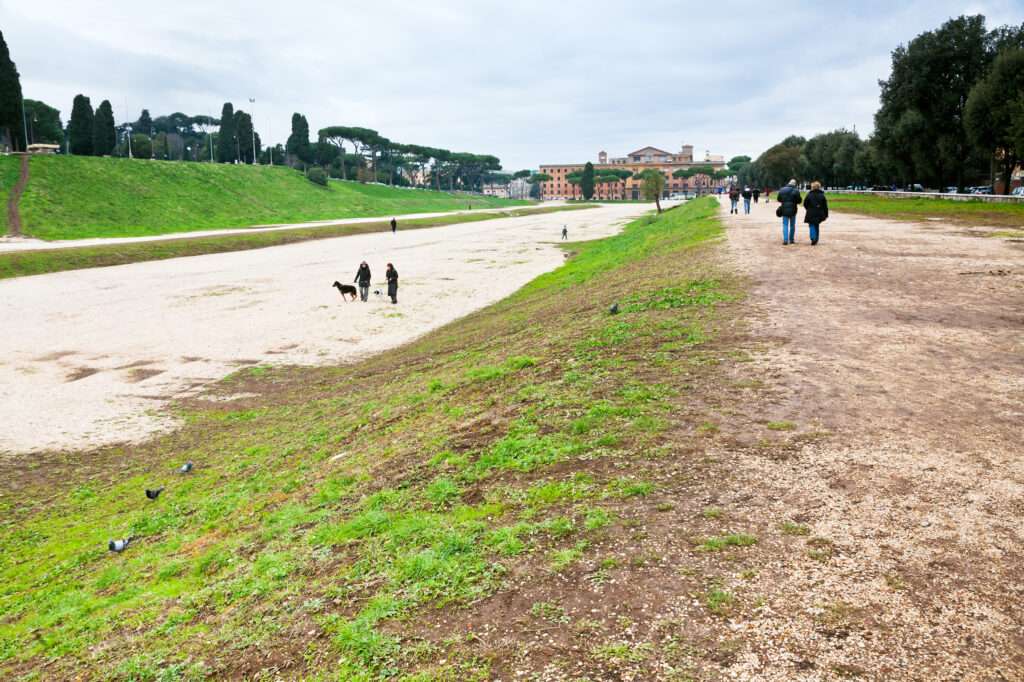
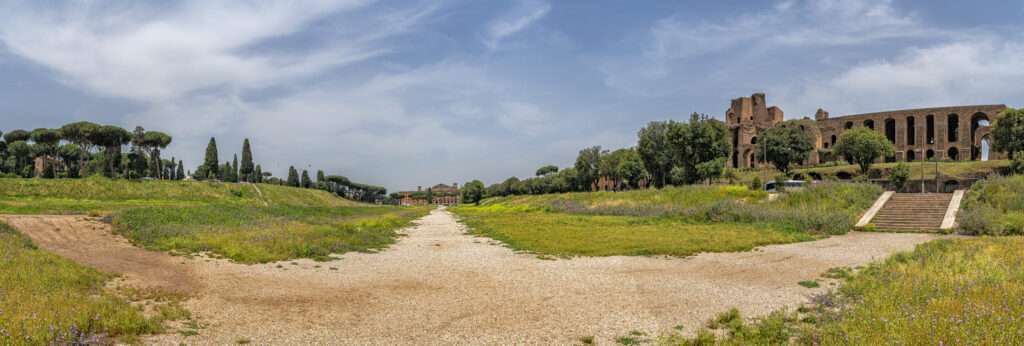
Stadium of Domitian
The Stadium of Domitian opened in AD 86 under the reign of the emperor with which the stadium gets its name – Domitian. It is said to be a scaled-down version of the Circus Maximus. It was approximately 275m long, 106m wide and was said to hold around 30,000 spectators.
It was the main arena for athletic arena of ancient Rome, with a large track contained within it. It went through various uses throughout the centuries and eventually houses large swathes of the city’s poor after the barbarian invasions and the fall of the Roman Empire.
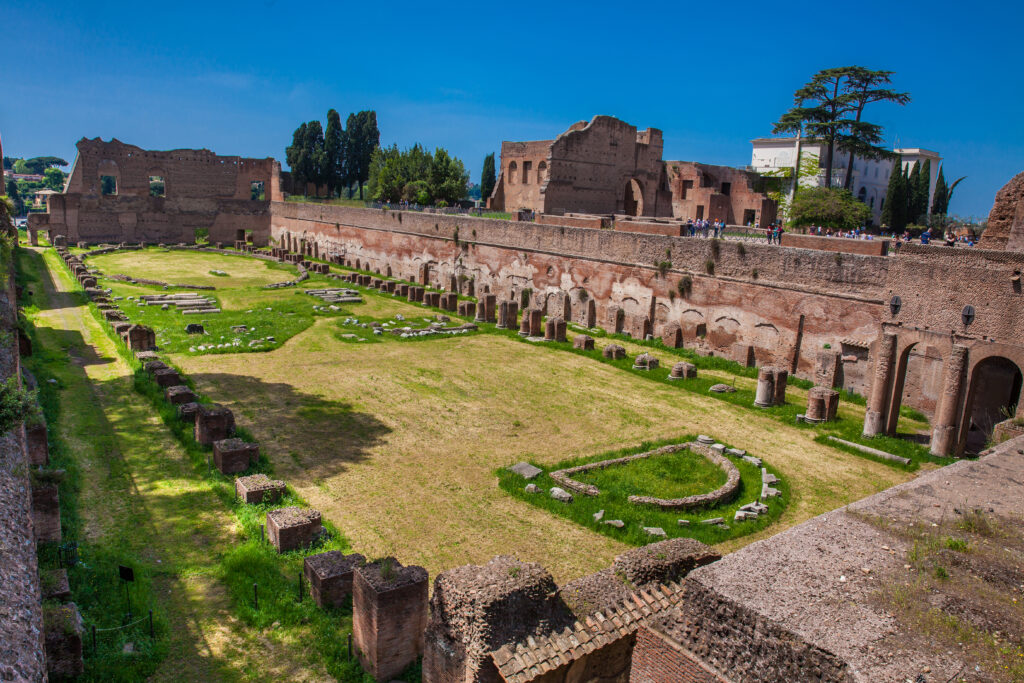
Baths of Diocletian
The Baths of Diocletian were the largest bathhouses of the Roman world. A place where Romans of all classes could gather, wash themselves and socialize. Construction started in 298 under Emperor Maximian and was completed by Emperor Constantius, after co-Emperors Maximian and Diocletian abdicated their Imperial positions.
The Baths were damaged over the following decades before falling out of use in AD 537 after the siege of Rome, where the besieging Ostrogoths, led by king Vitiges, cut off the water supply by destroying parts of the aqueducts that fed the baths.
The Baths had many different uses throughout history and currently houses the Santa Maria degli Angeli e dei Matiri Basilica, the church of San Bernardo alle Terme and parts of the National Roman Museum.
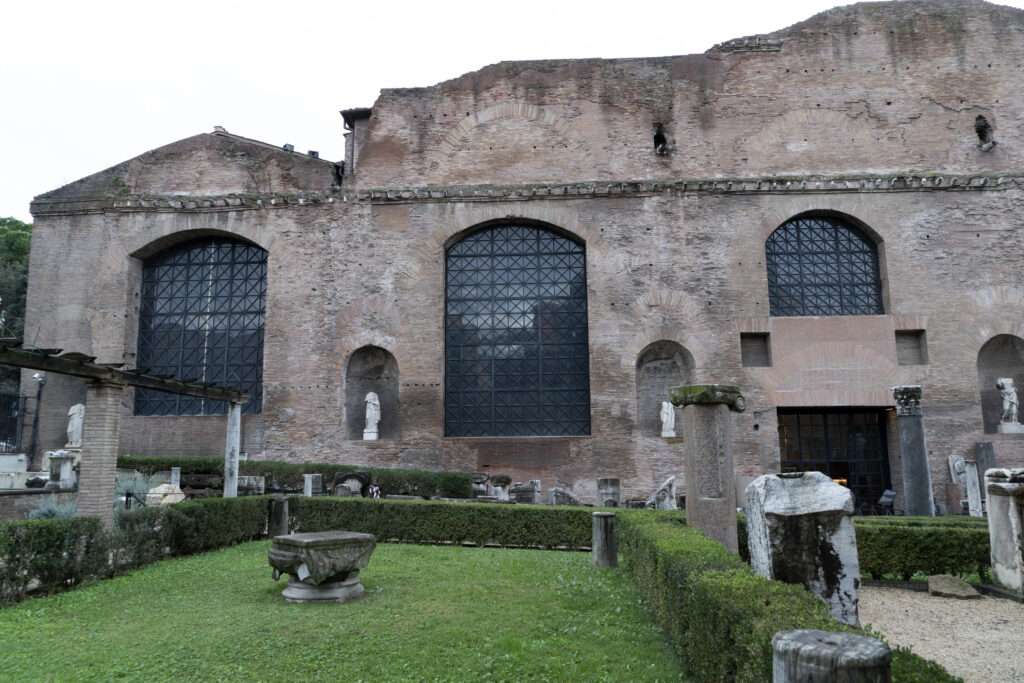
Temple of Jupiter Optimus Maximus
Jupiter was the most important god of ancient Rome, from its founding until Christianity began its ascendency in the fourth century AD. Even with the ascent of Christianity, many pagans remained throughout the empire. As such, Jupiter still played a significant role in Roman worship.
The Temple of Jupiter Optimus Maximus has gone through many many reconstructions throughout history, with its first iteration being made out of wood. Traditional accounts put the opening of this temple at 509 BC.
Fire destroyed the temple in 83 BC, and as such, it was rebuilt using sturdier materials. The second iteration of the temple was opened in 69 BC, with lavish improvements, including giant columns from Greece. The temple subsequently burned down again in AD 69 during intense fighting when Vespasian’s army entered the city.
The temple was again rebuilt, this time under Emperor Vespasian after gaining control of the city. It was built on the same foundations This iteration did not last long however, burning down again during the reign of Titus in AD 80. The Romans must have thought that the building was cursed!
The fourth and last iteration of the temple was opened in AD 82. It was a lavish structure by all accounts, gilded in gold and bronze, while elaborate sculptures featured throughout. It was in use until around AD 392, when Emperor Theodosius I ordered all pagan temples closed during the persecution of pagans (Theodosius was Christian).
The temple was plundered over decades, during the sack of Rome in AD 455 and again in AD 571. It survived in the most part until the sixteenth century, when it was demolished to make way for a palace.
All that remains is basically the foundations of the temple.
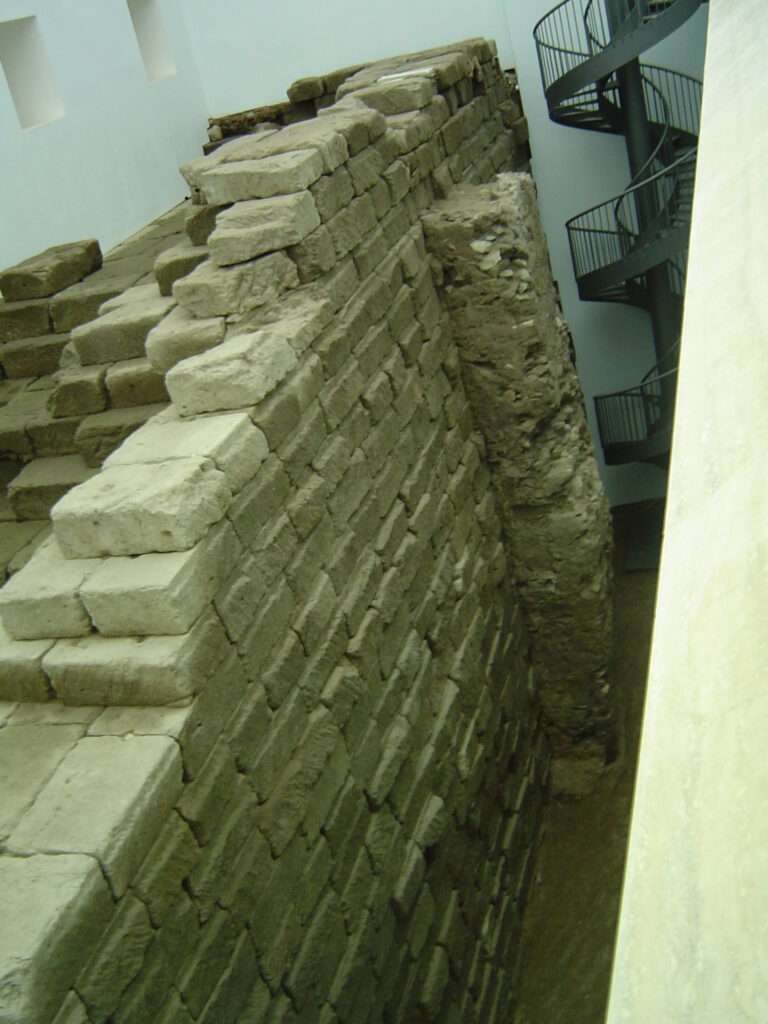
Temple of Saturn
The Temple of Saturn is one of the oldest Roman temples, with some putting the date of its construction to the late fifth century BC. Saturn is one of the most important gods in the Roman pagan religion.
The temple was destroyed and then rebuilt in 42 BC. Fire again ripped through Rome in AD 360, leading to the temple being rebuilt shortly afterwards. It would not be open for long because, like the Temple of Jupiter, it would be closed under Theodosius I due to the pagan persecution.
What remains though, is impressive.
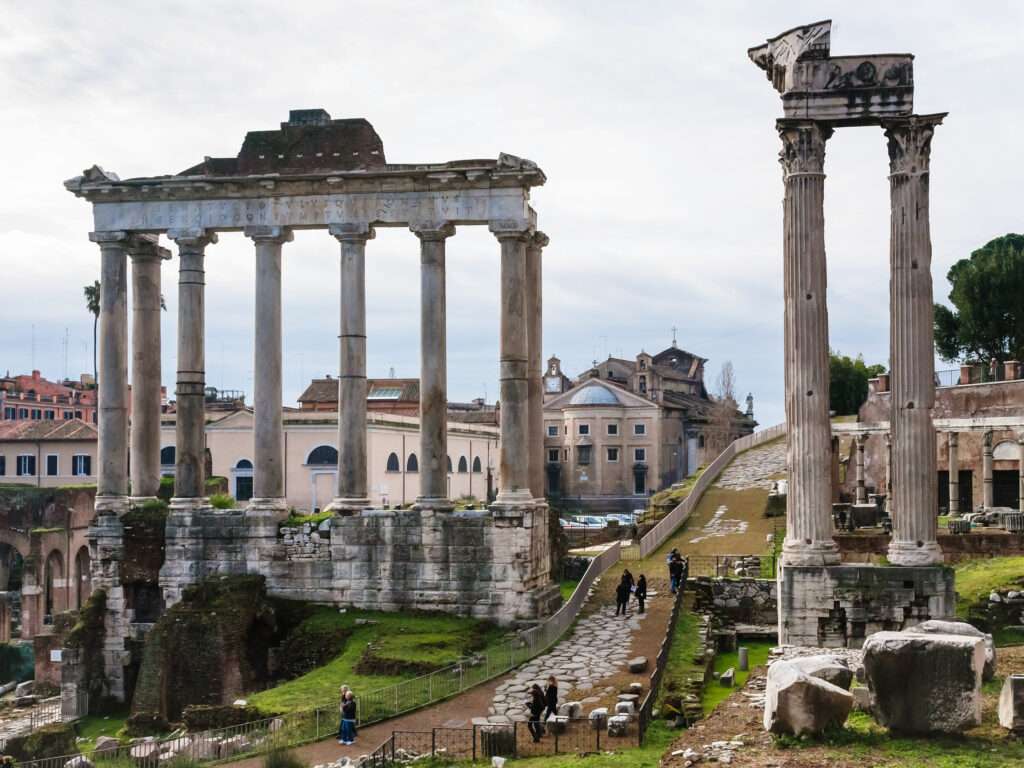
Trajan’s Market
Trajan’s Market was built early in the second century AD under Emperor Trajan and was opened in AD 113. It was likely built by famous architect, Apollodorus of Damascus and gets it curved shape from theatres built at the time. It was built into the side of the Quirinal Hill. It is said to be the world’s oldest shopping mall, however much of the area was used as offices for the day to day administration of the Empire.
It was added to in the middle ages, with extra floors added and a defensive tower built in AD 1300. A convent was also located there for a few hundred years but was leveled in the early twentieth century so archeological restoration could take place at the market.
Large parts of it remain intact, in what is an incredible structure.
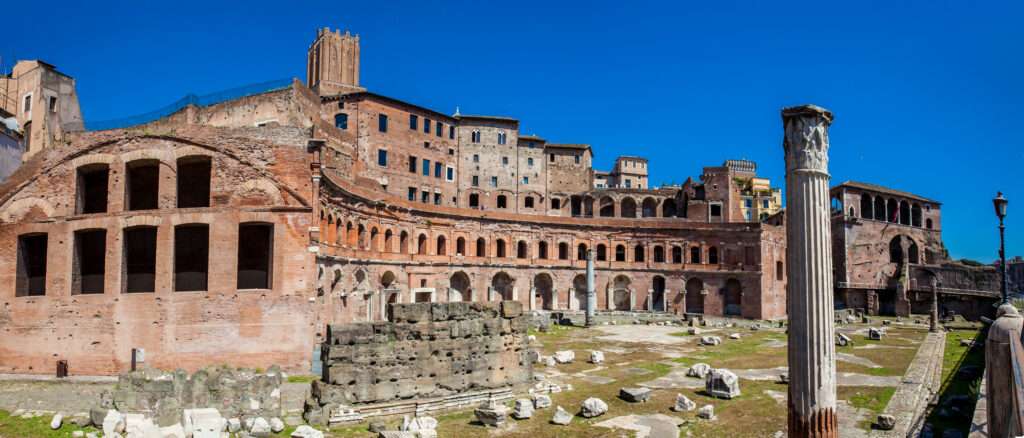
These are just a small number of Roman ruins that are still standing, in one form or another. The quality of the materials used would have to play a role in these buildings remaining on the Roman landscape.

